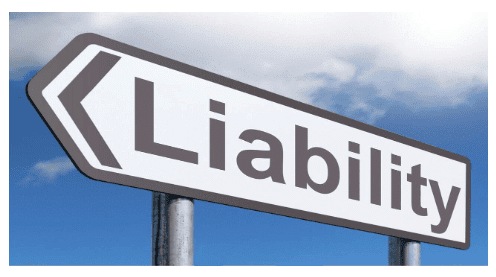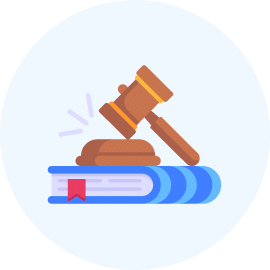Strict Liability and Absolute Liability | Law of Torts - CLAT PG PDF Download
Introduction

The law of torts aims to achieve distributive justice, ensuring that the person responsible for causing injury to the plaintiff bears the burden of compensation.
- If the defendant is at fault, they must compensate the plaintiff and bear the burden.
- If the plaintiff is at fault, they bear the burden.
- If both parties are at fault, they share the burden.
- If neither is at fault, the plaintiff bears the loss.
Additionally, the law of torts does not hold the defendant liable for any loss caused to the plaintiff due to the defendant's actions unless there is a breach of legal duty towards the plaintiff. This distinction is seen in concepts like damnum sine injuria and injuria sine damno.
Fault Liability vs. No Fault Liability
- Fault Liability: Involves duties not to injure intentionally, recklessly, or negligently.
- No Fault Liability: Involves duties not to injure simpliciter, regardless of fault.
When a person is engaged in an activity with normal risks, they have a duty not to cause injury intentionally, recklessly, or negligently.
Fault Liability is invoked when a person injures another intentionally, recklessly, or negligently. For instance, if a person damages another's property due to negligence, they are liable for the harm caused.
No Fault Liability applies when a person causes injury without any intention or negligence. An example would be a factory owner whose machinery accidentally causes harm to a neighbor's property without any fault on the owner's part.
Strict Liability in Law
Strict liability is a legal doctrine that holds individuals or entities accountable for damages caused by their actions, regardless of intent or negligence. This principle is often applied in cases involving inherently dangerous activities or the use of hazardous materials.
Origin of Strict Liability
Justice Blackburn's judgment in the case of Rylands v. Fletcher is recognized as the first instance where strict liability was applied in legal practice.
Rylands v. Fletcher Case
- In 1860, John Rylands planned to build a reservoir to supply water to the Ainsworth mill and hired a competent contractor for the project.
- Nearby, Thomas Fletcher owned a mine with old disused shafts connecting his land to the plaintiff's mines.
- The contractor, aware of these shafts, failed to fill them properly. When the reservoir was filled, the pressure caused the shafts to collapse, leading to water entering the plaintiff's mines and causing damage.
- Although the defendant was not negligent, the contractor was, yet the defendant was held liable for the damage caused.
Principle of Strict Liability
The principle established in Rylands v. Fletcher states that:
- A person who brings and keeps something on their land that is likely to cause harm if it escapes is responsible for its safety.
- If the item escapes and causes damage, the person is liable for all the damage that is a natural consequence of its escape.
- The use of land must be non-natural for this principle to apply.
Essentials of Strict Liability
- According to Blackburn J., the rule of strict liability applies when bringing dangerous things onto the defendant's land that are likely to cause harm if they escape.
- In the case of Hale v. Jennings Brothers, Scott, LJ described the rule as a broad principle where liability arises from the occupier bringing something onto the land that is likely to cause damage if it escapes.
- In Read v. Lyons, Lord Macmillan explained that the doctrine of Rylands v. Fletcher is based on the mutual duties of adjoining landowners, similar to trespass and nuisance.
Essential Conditions for Strict Liability in Rylands v. Fletcher
In the context of strict liability as established in the case of Rylands v. Fletcher, Viscount Simon outlined two key conditions:
- Escape: There must be an escape from the land of something likely to cause harm if it escapes.
- Non-Natural Use of Land: The use of land must be non-natural.
The following three requirements are essential for the application of the rule in Rylands v. Fletcher:
- Dangerous Thing: A dangerous item must be brought, collected, and kept on the land.
- Non-Natural Use of Land: The use of land must be non-natural.
- Escape: The dangerous thing must escape from the land.
1. Dangerous Thing
A dangerous thing is one that has a tendency to escape and, upon escaping, can cause significant damage. Examples of dangerous things include gases, liquids, and animals.
2. Non-Natural Use of Land
The use of land must be for purposes other than its ordinary or natural use. This means the land is being used for something beyond its intended or suitable purpose. Examples of natural use of land include:
- Storage of water in a reservoir for mill use.
- Storage of one or two gas cylinders for domestic use.
- Electricity connection for lighting a house.
- Lighting an oil lamp in a house.
Illustration: Sochacki v. Sas
In the case of Sochacki v. Sas, a lodger (B) lit a fire in his room and left the premises. While he was away, the fire in his room, possibly due to a spark, spread and caused damage to the property of the landlord (A) in the rest of the house. There was no evidence of negligence on the part of B. The court held that B was not liable under the principle of Rylands v. Fletcher because his use of the fire in the grate was considered ordinary, natural, and proper.
Everyday Use of a Fireplace in a Room
- In T.C. Balkrishna Menon v. T.R. Subramanian, the Court ruled that using explosives in an open field during a festival constitutes a 'non-natural' use of land.
- In State of Punjab v. Modern Cultivators, damage to the plaintiff's property occurred due to water overflowing from a canal. The Supreme Court determined that constructing a canal system is a normal use of land and not a non-natural use.
- In Mukesh Textile Mills v. Subramanya Sastry, A owned a sugar factory and stored molasses, which escaped onto B's adjacent land and damaged B's crops. The court held that collecting large quantities of molasses was a non-natural use of land, making A liable for the escape of molasses to B's land.
Escape
- The defendant is only liable if the object escapes from land under their occupation or control.
In Read v. J. Lyons & Co. Ltd., the appellant, an Inspector of Ammunition, was injured by the explosion of a shell while on the respondent's premises. There was no proof of negligence on the part of the defendant. The court ruled that the injury occurred on the defendant's premises, not outside, thus there was no escape, and the respondents were not liable.
Exceptions to the Rule of Strict Liability
The rule of strict liability does not apply in the following circumstances:
- Act of God (Vis Majeur)
- Act of a third party
- Plaintiff's consent
- Common benefit of plaintiff and defendant
 |
Download the notes
Strict Liability and Absolute Liability
|
Download as PDF |
Exceptions to the Rule of Strict Liability
The rule of strict liability does not apply in the following circumstances:
Act of God (Vis Majeur)
- Definition: Act of God refers to damages caused by natural forces that are unforeseen, uncontrollable, and extraordinary.
- Case Examples:
- Nichols v. Marshland: The defendant created ornamental lakes by damming a natural stream. Due to unprecedented rainfall, the artificial embankments failed, causing damage. The court ruled the defendant was not liable.
- Ryan v. Young: A lorry driver died while driving, causing an accident. The defendant was not liable as there was no fault in the vehicle and the driver appeared healthy.
- State of Mysore v. Ramchandra: Constructing a water storage was deemed a natural use of land. However, failure to arrange for emergency water outlet led to damage, and the Act of God defense was not accepted.
Act of Third Party
- Definition: When damage is caused by the actions of a third party beyond the defendant's control, the defendant is not liable.
- Case Example:
- Box v. Jubb: The defendants owned a reservoir supplied by a main drain not under their control. An obstruction caused by a third party led to overflow from the reservoir, resulting in damage. The court ruled the defendants were not liable.
Green v. Chelsea Waterworks
- The defendants were legally allowed to store water for supplying it to the city.
- Due to an accidental incident, the stored water escaped and caused harm to the plaintiff.
- The Court determined that if the defendant's accumulation of water was not for their own benefit, and they were legally authorized to do so, they would not be liable for any escape unless it resulted from their negligence.
|
24 docs|13 tests
|
FAQs on Strict Liability and Absolute Liability - Law of Torts - CLAT PG
| 1. What is the difference between strict liability and absolute liability? |  |
| 2. What are the essential conditions for strict liability as established in Rylands v. Fletcher? |  |
| 3. Are there exceptions to the rule of strict liability? |  |
| 4. How does the case of Green v. Chelsea Waterworks illustrate the principles of strict liability? |  |
| 5. How does the concept of strict liability apply in India? |  |

















